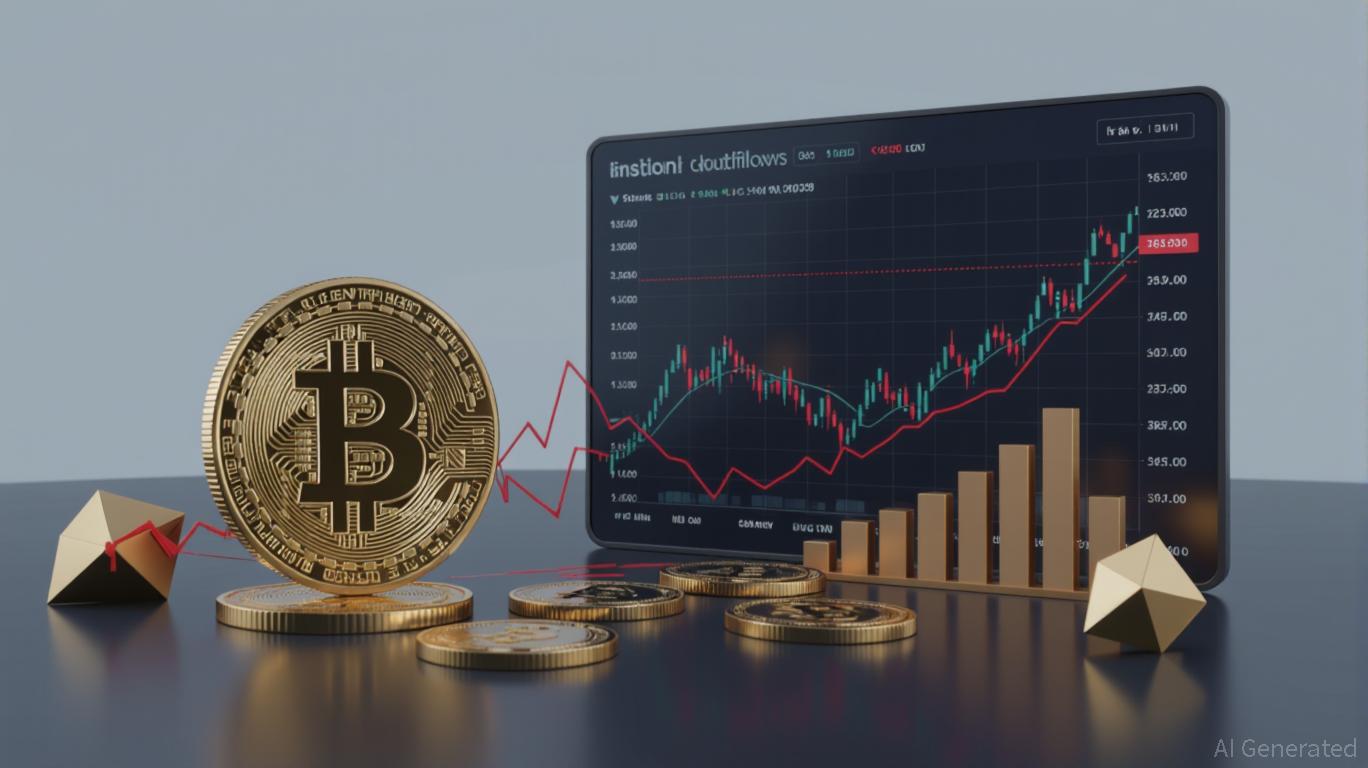Drivers of the Latest BTC Downturn: Institutional Withdrawal or Excessive Market Correction?
- Bitcoin's recent crash reflects $3.2B in institutional outflows since October, driven by liquidity stress and macroeconomic uncertainty. - Major ETFs like BlackRock's IBIT ($463M) and Fidelity's FBTC face massive redemptions as investors recalibrate risk profiles amid tightening financial conditions. - Structural shifts like Singapore's institutional-grade crypto futures signal long-term optimism, but coincide with Fed's restrictive policy (3% inflation) forcing deleveraging. - The correction appears liq
The recent
Institutional Outflows: Indication of Liquidity Pressure
For three straight weeks, institutional players have been net sellers of Bitcoin and other digital assets, with November 2025 seeing the biggest weekly withdrawal since February 2025.
These withdrawals are part of a larger trend rather than isolated incidents.

Structural Changes: Connecting Traditional Finance and Crypto
Even with recent outflows, the institutional crypto sector is experiencing significant structural evolution.
Yet, these advancements are happening alongside a liquidity squeeze, raising doubts about whether structural improvements can counteract immediate economic pressures. The financial industry’s gradual move away from bank-centric lending—where
Macroeconomic Challenges: The Fed’s Influence on Risk Appetite
The Federal Reserve’s approach to inflation continues to play a pivotal role.
The Fed’s policy direction also affects borrowing expenses for leveraged institutional investors. Rising interest rates make margin trading more costly, prompting crypto funds to reduce their exposure—a process that can speed up price drops. This highlights how broader economic conditions are not just background factors, but actively shape institutional strategies.
Crash or Overreaction?
The combination of these elements points to a mixed scenario. While long-term optimism is reflected in structural changes like SGX’s regulated futures, immediate economic challenges are prompting short-term withdrawals.
For investors, the challenge is to separate short-lived volatility from deeper, structural shifts. The rollout of institutional-grade products points to a maturing market, but their success will depend on whether the broader economic environment stabilizes. Until then, the
Disclaimer: The content of this article solely reflects the author's opinion and does not represent the platform in any capacity. This article is not intended to serve as a reference for making investment decisions.
You may also like
Ethereum Updates Today: Institutional Crypto Landscape Advancing: SharpLink’s $17 Million ETH OTC Transaction Showcases Expansion
- SharpLink transferred $17M ETH to Galaxy Digital's OTC wallet, signaling rising institutional crypto activity and its treasury optimization strategy. - The move aligns with SharpLink's strategy to deploy ETH for yield generation, including $200M in DeFi via ether .fi and EigenCloud. - Galaxy Digital's prior ASTER token transfer highlights OTC's role in discreet large-scale trades, avoiding public market volatility. - SharpLink's Q3 2025 $104. 3M net income and $1.5B stock buyback reflect confidence in ca

Bitcoin News Update: El Salvador Challenges IMF, Purchases $100M in Bitcoin Amid Price Drop
- El Salvador bought $100M Bitcoin at a seven-month low, boosting reserves to 7,474 BTC ($688M) via its "1 BTC per day" strategy. - The purchase contradicts IMF loan terms requiring curtailed public Bitcoin buys, sparking confusion amid claims of halted purchases since February 2025. - Critics warn of economic risks from volatile assets, while officials defend blockchain transparency; Bitcoin's 26% drop triggered $19B in liquidations. - Despite IMF warnings and low domestic adoption, El Salvador's $264M un

Trump Reverses Tariffs: Indian Agricultural Exports Benefit, Yet Major Obstacles Persist
- Trump administration cancels tariffs on Indian agricultural goods like spices and coffee, boosting $1B annual exports amid inflation concerns. - India's Commerce Ministry welcomes exemptions, noting 40% of 2024 agri-exports now qualify for zero-duty U.S. market access. - National Restaurant Association praises move for stabilizing supply chains but warns tariffs on Brazilian beef and Indian toys persist. - U.S. policy shift reflects geopolitical strategy while India focuses on improving export infrastruc

DASH Aster DEX's Latest Strategic Change and Its Impact on DeFi Liquidity Providers
- DASH Aster DEX is reshaping DeFi 2.0 through cross-chain expansion and hybrid AMM-CEX models, achieving $1.399B TVL and $27.7B daily trading volumes in Q3 2025. - Its multi-chain integration across BNB Chain, Ethereum , and Solana reduces slippage while partnerships with Binance drive 94% of trading volume via ASTER/BSC-USD pairs. - Governance upgrades include ASTER token utility for leveraged trading and annual burns, though centralized control persists with long-term decentralization goals. - Market re